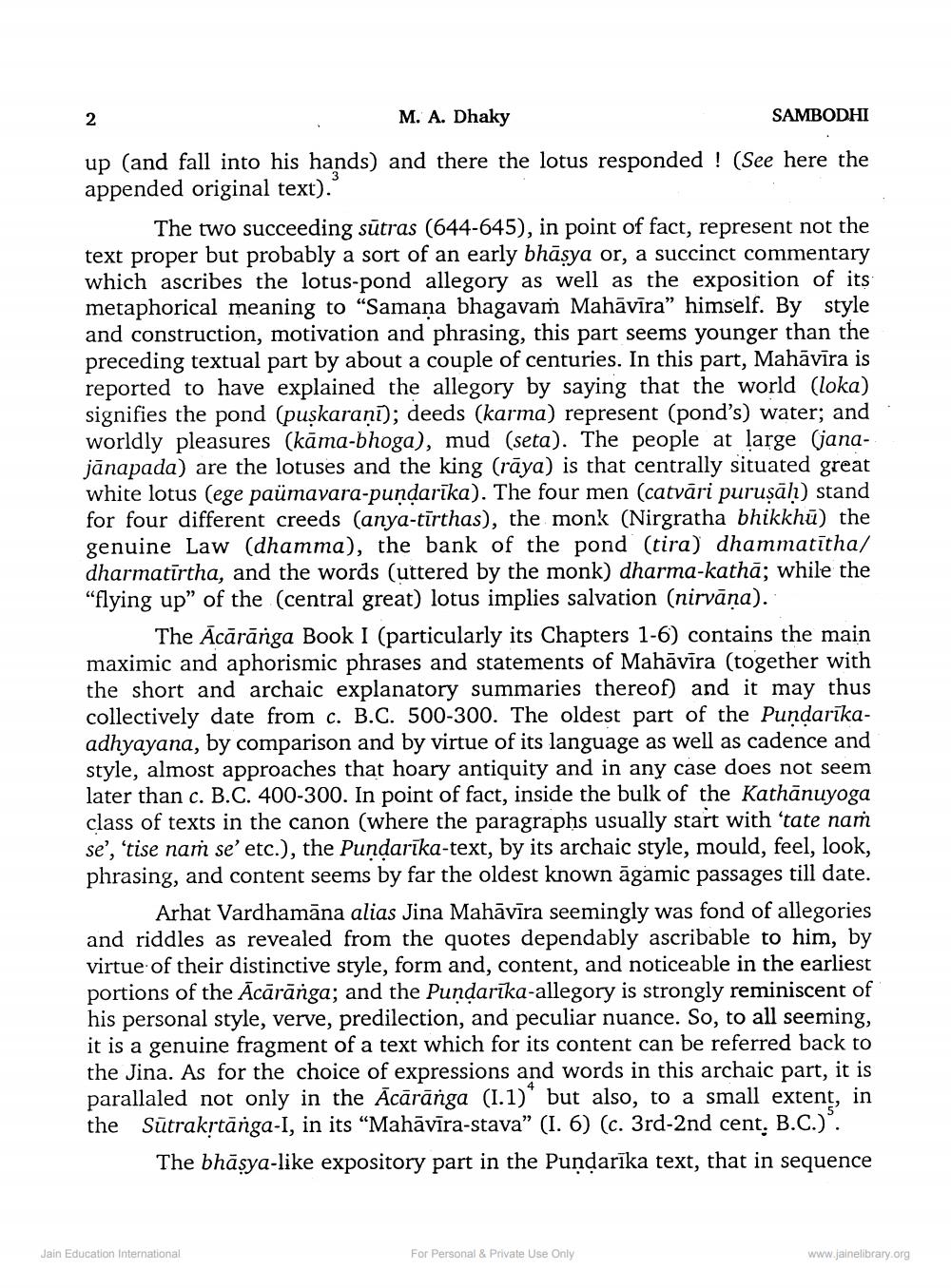________________
M. A. Dhaky
SAMBODHI
up (and fall into his hands) and there the lotus responded ! (See here the appended original text).
The two succeeding sūtras (644-645), in point of fact, represent not the text proper but probably a sort of an early bhāsya or, a succinct commentary which ascribes the lotus-pond allegory as well as the exposition of its metaphorical meaning to “Samana bhagavam Mahāvīra” himself. By style and construction, motivation and phrasing, this part seems younger than the preceding textual part by about a couple of centuries. In this part, Mahāvīra is reported to have explained the allegory by saying that the world (loka) signifies the pond (puşkaraṇī); deeds (karma) represent (pond's) water; and worldly pleasures (kāma-bhoga), mud (seta). The people at large (janajānapada) are the lotuses and the king (rāya) is that centrally situated great white lotus (ege paümavara-pundarīka). The four men (catvāri puruṣāh) stand for four different creeds (anya-tīrthas), the monk (Nirgratha bhikkhū) the genuine Law (dhamma), the bank of the pond (tira) dhammatītha/ dharmatīrtha, and the words (uttered by the monk) dharma-kathā; while the “flying up” of the (central great) lotus implies salvation (nirvāņa).
The Ācārānga Book I (particularly its Chapters 1-6) contains the main maximic and aphorismic phrases and statements of Mahāvīra (together with the short and archaic explanatory summaries thereof) and it may thus collectively date from c. B.C. 500-300. The oldest part of the Pundarīkaadhyayana, by comparison and by virtue of its language as well as cadence and style, almost approaches that hoary antiquity and in any case does not seem later than c. B.C. 400-300. In point of fact, inside the bulk of the Kathānuyoga class of texts in the canon (where the paragraphs usually start with 'tate nam se', 'tise nam se' etc.), the Pundarīka-text, by its archaic style, mould, feel, look, phrasing, and content seems by far the oldest known āgamic passages till date.
Arhat Vardhamāna alias Jina Mahāvīra seemingly was fond of allegories and riddles as revealed from the quotes dependably ascribable to him, by virtue of their distinctive style, form and, content, and noticeable in the earliest portions of the Ācārānga; and the Pundarīka-allegory is strongly reminiscent of his personal style, verve, predilection, and peculiar nuance. So, to all seeming, it is a genuine fragment of a text which for its content can be referred back to the Jina. As for the choice of expressions and words in this archaic part, it is parallaled not only in the Ācārānga (1.1)" but also, to a small extent, in the Sūtrakrtānga-I, in its "Mahāvīra-stava" (I. 6) (c. 3rd-2nd cent. B
The bhāsya-like expository part in the Pundarīka text, that in sequence
Jain Education International
For Personal & Private Use Only
www.jainelibrary.org




